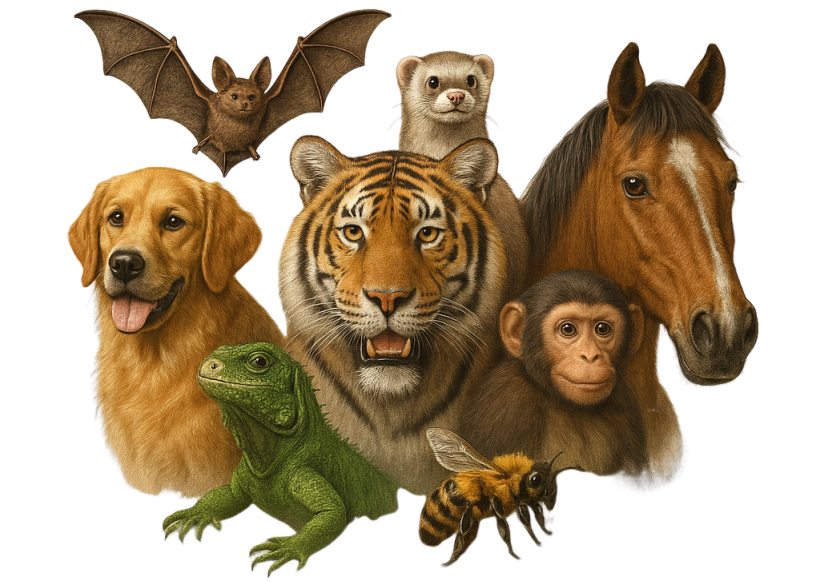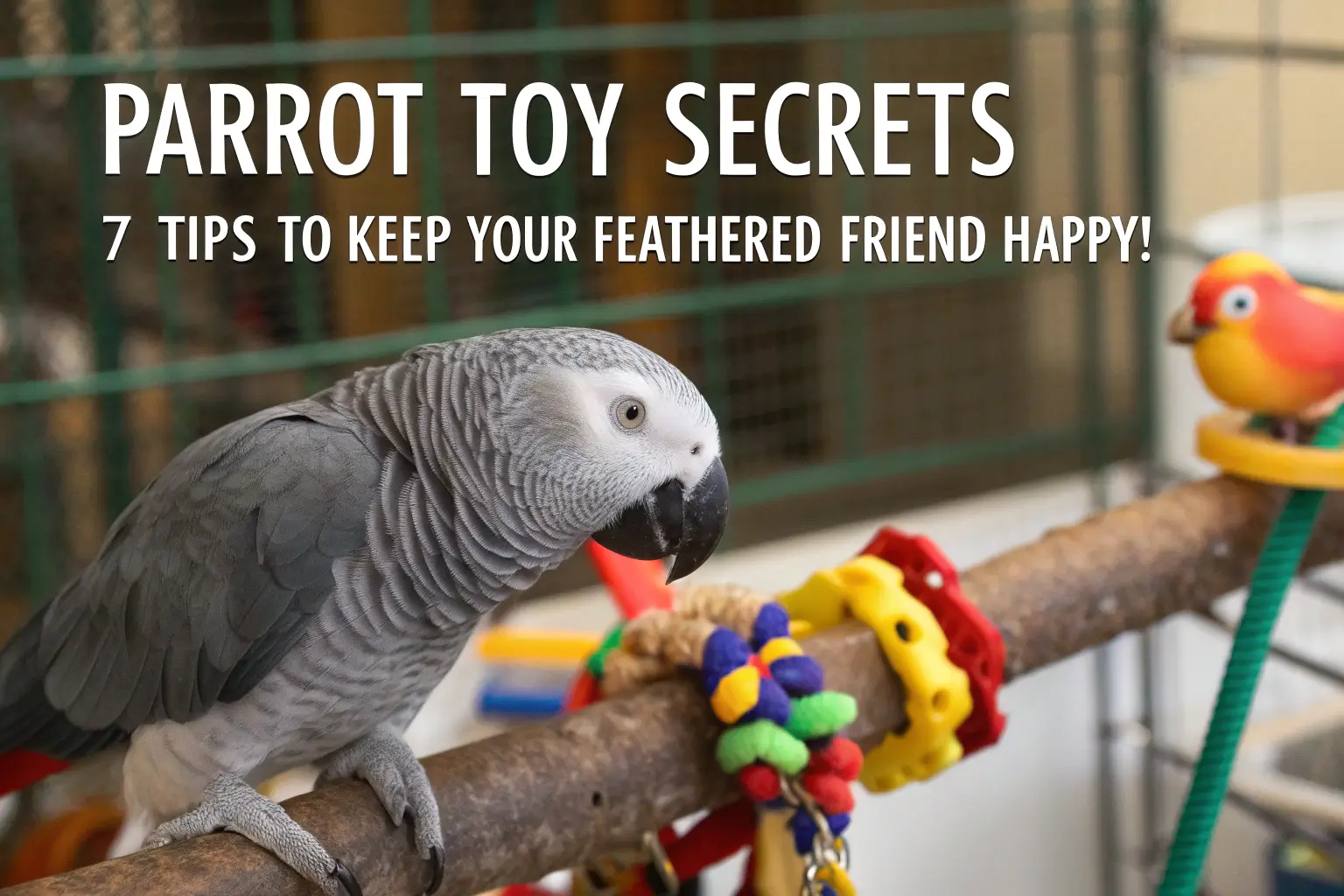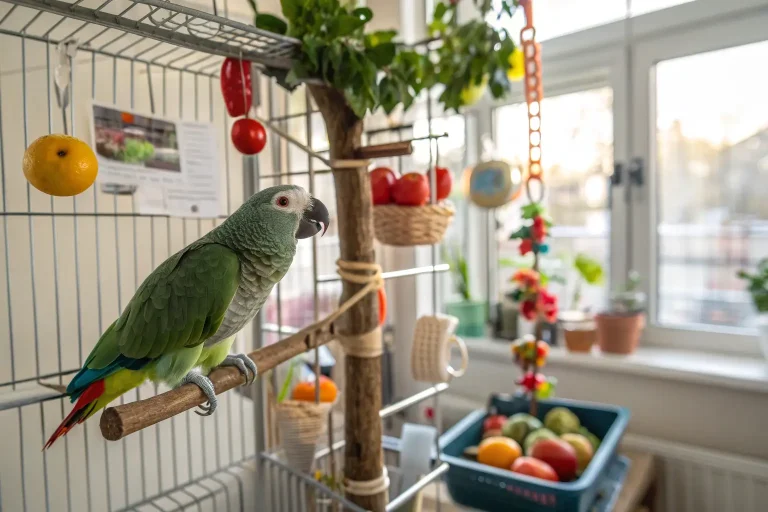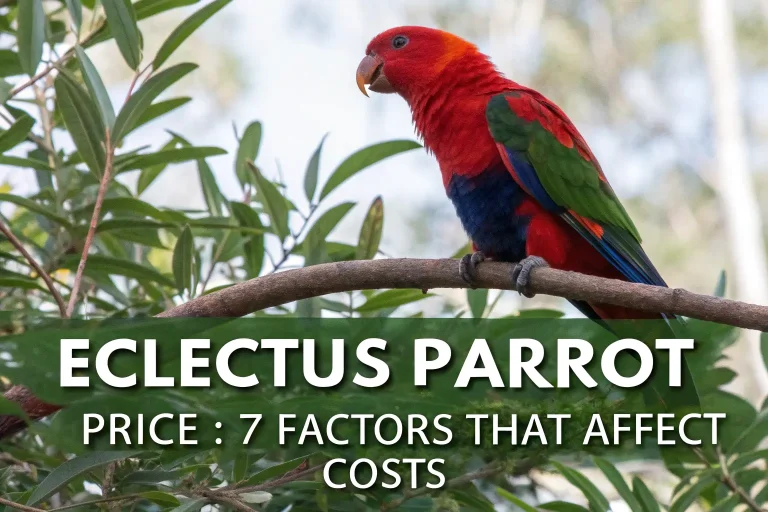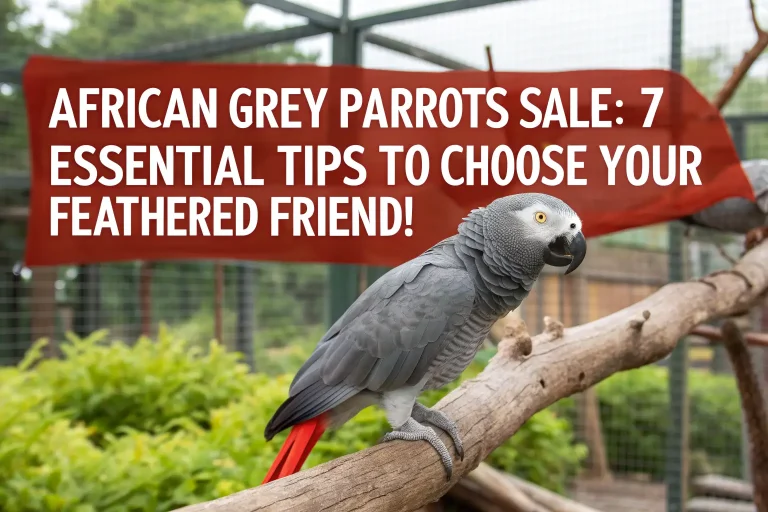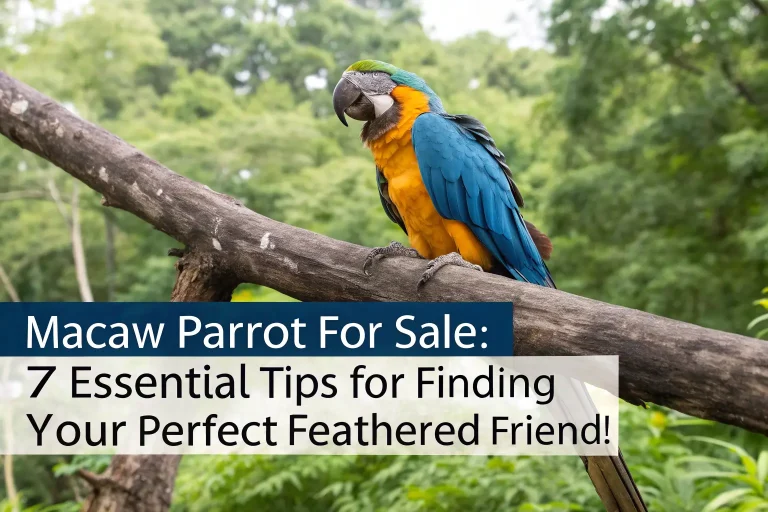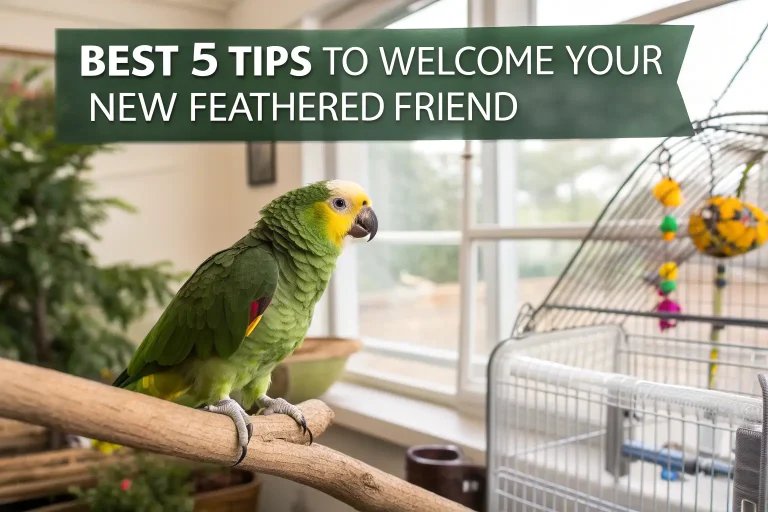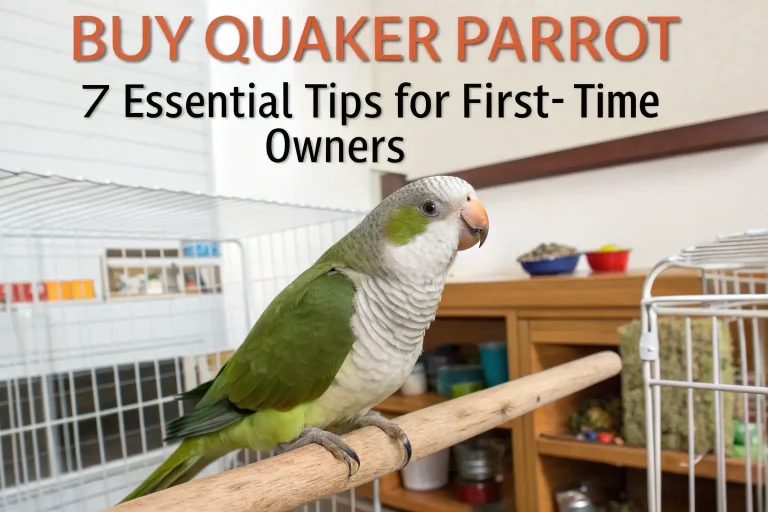Parrot Toy Secrets: 7 Tips to Keep Your Feathered Friend Happy!
Struggling to entertain your bird? Unveil the top parrot toy tips to keep your pet stimulated & joyful! Ideal solutions for every parrot owner. Discover how!
Introduction
Parrots are among the most vibrant, intelligent, and social companions in the avian world. These colorful feathered friends thrive on mental stimulation and physical activity, making parrot toys not just accessories but essential tools for their wellbeing. Whether you own a massive Macaw or a pocket-sized Lovebird, understanding how to properly enrich your parrot’s environment through toys can dramatically improve their quality of life and strengthen your bond.
Did you know that a bored parrot can develop destructive behaviors like feather plucking, excessive screaming, and even depression? It’s true! Studies have shown that parrots with adequate toy stimulation display fewer behavioral problems and generally live healthier, happier lives. One fascinating fact: wild parrots spend up to 60% of their waking hours foraging and playing—activities we must recreate in captivity through thoughtful toy selection.
Species Overview
Scientific Name
Parrots belong to the order Psittaciformes, which includes over 350 species ranging from the tiny Buff-faced Pygmy Parrot to the magnificent Hyacinth Macaw. Common pet species include African Greys (Psittacus erithacus), Budgerigars (Melopsittacus undulatus), Cockatiels (Nymphicus hollandicus), and various Macaws (Ara species).
Physical Characteristics
Parrots are instantly recognizable by their curved beaks, zygodactyl feet (two toes facing forward and two backward), and often brilliant plumage. Their size varies dramatically—from just a few inches tall for Parrotlets to over 3 feet for larger Macaws. Most species display vibrant colors that can include every shade of the rainbow, while their powerful beaks are adapted for cracking nuts and seeds in the wild—a feature that directly influences their toy preferences.
Subspecies
Many popular pet parrot species have notable subspecies. For instance, the Amazon parrot family includes Blue-fronted, Yellow-naped, and Double Yellow-headed varieties, each with slightly different toy preferences based on their natural behaviors. Similarly, conures come in numerous varieties like Sun, Green Cheek, and Jenday—all with varying energy levels and play styles that affect their interaction with toys.
Habitat and Distribution
Natural Habitat
In the wild, parrots typically inhabit tropical and subtropical regions, making their homes in rainforests, savannas, scrublands, and even alpine areas in South America, Africa, Asia, Australia, and Oceania. Their natural environments are rich with opportunities for exploration, foraging, and play—elements that quality parrot toys should aim to replicate.
Geographic Range
Different parrot species originate from diverse regions: African Greys come from central Africa, Macaws from Central and South America, and Cockatoos from Australia and surrounding islands. Understanding your specific parrot’s geographic origin can provide insights into their natural behaviors and toy preferences.
Adaptations
Parrots have evolved remarkable adaptations that influence how they interact with toys. Their powerful beaks can exert tremendous pressure (over 500 pounds per square inch in some Macaws!), making durability a critical factor in parrot toys. Their dexterous tongues and feet allow for intricate manipulation of objects, while their problem-solving intelligence demands toys that offer cognitive challenges.
Diet and Feeding Habits
What It Eats
In nature, parrots consume a varied diet of seeds, nuts, fruits, berries, and occasionally insects. This dietary diversity is reflected in their play behaviors—many parrot toys incorporate food-related activities to satisfy their natural foraging instincts.
Hunting or Foraging Behavior
Wild parrots spend much of their day searching for food—climbing, flying, digging, and manipulating objects to access nutrition. This innate foraging behavior makes food-puzzle toys particularly beneficial for captive parrots, as they recreate these natural activities.
Dietary Needs
Different parrot species have varying nutritional requirements that can influence toy preferences. Larger parrots with powerful beaks may enjoy toys that allow them to shred, tear, and destroy—mimicking how they would process tough nuts and seeds in the wild. Smaller species might prefer toys that allow for more delicate manipulation.
Behavior and Social Structure
Social Behavior
Most parrot species are highly social, living in flocks that can range from a few individuals to thousands of birds. This social nature means they crave interaction—with other birds or their human family members. Interactive parrot toys that encourage mutual play can help fulfill this need, especially for single birds without avian companions.
Communication
Parrots communicate through vocalizations, body language, and displays. Many toys that make noise (bells, rattles) appeal to their communicative nature. Color perception in parrots far exceeds human abilities—they can see in the ultraviolet spectrum—making bright, colorful toys particularly appealing to these visual creatures.
Mating and Reproduction
During breeding seasons, wild parrots engage in specific behaviors like nest-building and courtship displays. These instinctual behaviors may manifest in how they interact with certain toys—some parrots may show increased interest in shredding materials or manipulating soft toys during these periods.
7 Essential Parrot Toy Tips
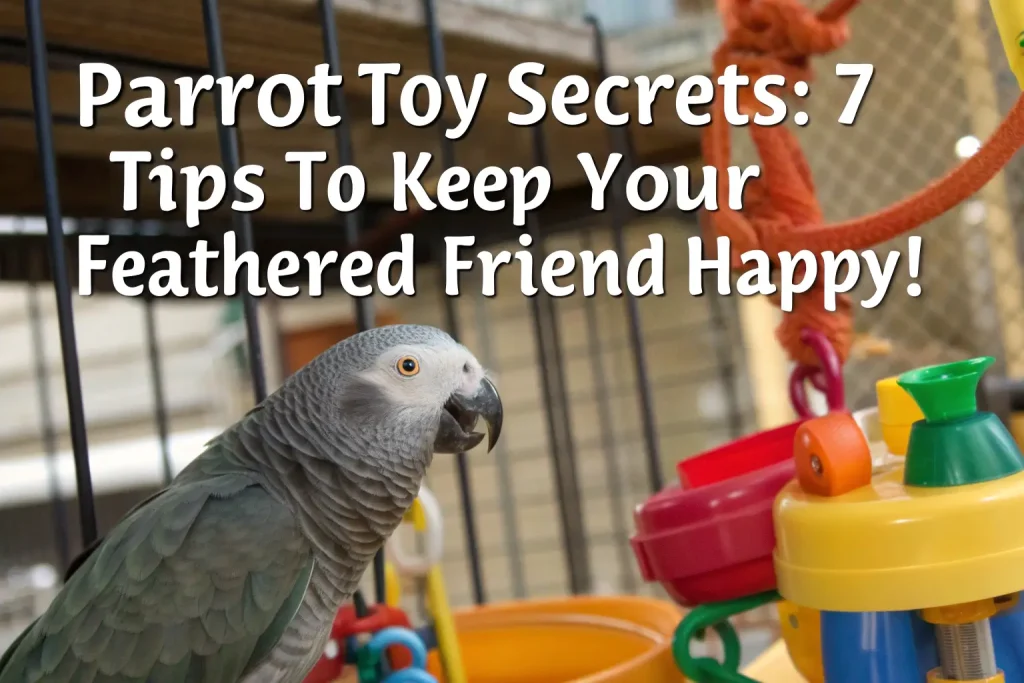
1. Prioritize Safety Above All
When selecting parrot toys, safety must be your primary concern. Avoid toys with small, easily swallowed parts, toxic materials, or harmful dyes. According to avian veterinarian Dr. Margaret Johnson, “The ideal parrot toy should be tough enough to withstand chewing but not so hard that it risks beak damage.”
Pro Tip: Regularly inspect toys for damage and immediately remove any with exposed wire, loose parts, or splintering wood.
Materials to avoid include:
- Zinc or lead components (commonly found in cheap metal parts)
- Treated woods or those from toxic trees (cherry, oak, or pressure-treated lumber)
- Toys with small, easily detachable parts that could be swallowed
- Painted toys using non-food-grade colors
2. Match the Toy to Your Parrot’s Size and Species
Different parrot species have vastly different play styles and beak strengths. A toy that’s perfect for a Budgie might be demolished in seconds by a Macaw, while a Macaw-sized toy could be overwhelming for smaller species.
Size-Specific Recommendations:
- Small parrots (Budgies, Lovebirds, Parrotlets): Lightweight toys with small components, thin leather strips, tiny bells, and thin wooden pieces.
- Medium parrots (Conures, Caiques, Senegals): Medium-sized bells, thicker rope toys, plastic chains, and medium-density wood.
- Large parrots (African Greys, Amazons): Sturdy wood pieces, thicker ropes, larger bells, and more substantial foraging challenges.
- Extra-large parrots (Macaws, Cockatoos): Heavy-duty toys with thick hardwood, stainless steel components, and industrial-strength materials.
3. Offer Variety to Prevent Boredom
Parrots are highly intelligent creatures that require mental stimulation. Research from the University of California Davis Avian Sciences department suggests that parrots need at least 4-6 different types of toys to remain mentally stimulated.
Essential Toy Categories:
- Shreddable toys (paper, cardboard, untreated leather) satisfy natural foraging and nesting instincts
- Puzzle toys challenge their problem-solving abilities
- Chewing toys maintain beak health and satisfy destructive urges
- Noise-making toys (bells, rattles) appeal to their social, communicative nature
- Foraging toys that make them work for treats replicate natural feeding behaviors
“Rotate toys weekly,” suggests certified parrot behaviorist Emily Warren. “Even returning to a previously enjoyed toy after absence can renew a parrot’s interest.”
4. Embrace DIY Parrot Toys for Budget-Friendly Enrichment
Commercial parrot toys can be expensive, especially considering how quickly many birds destroy them. Creating homemade alternatives can be both economical and rewarding.
Safe DIY Materials:
- Untreated paper egg cartons filled with treats
- Untreated pine or balsa wood pieces strung on parrot-safe rope
- Paper towel rolls stuffed with shredded paper and hidden treats
- Stainless steel washers and nuts (properly sized for your bird) on leather strips
- Natural cotton rope (ensure it’s free of fraying hazards)
Caution: Always ensure homemade toys don’t have small parts that could be swallowed and use only bird-safe, non-toxic materials.
5. Understand Toy Placement Psychology
The location of toys in your parrot’s cage significantly impacts how they interact with them. Avian behavioral studies show that parrots have distinct preferences for where different types of toys should be placed.
Strategic Placement Guidelines:
- Foraging toys work best at eye level, where wild parrots would naturally search for food
- Comfort/preening toys are ideal near sleeping areas
- Active play toys should hang in open spaces where birds can swing and climb
- Foot toys belong on cage floors or platforms for manipulation
- Social toys (mirrors, interactive elements) work well near perches where birds spend most time
“Consider your parrot’s natural behaviors,” advises exotic bird specialist Dr. Robert Cunningham. “Placement that mimics wild behaviors yields better engagement.”
6. Recognize When Toys Need Replacement
Knowing when to replace parrot toys is crucial for both safety and continued enrichment. Various studies indicate that parrots lose interest in toys after about 2-3 weeks of consistent exposure.
Signs it’s time for replacement:
- Visible damage (splinters, loose parts, fraying rope)
- Contamination with droppings or food that can’t be cleaned
- Diminished interest despite repositioning in the cage
- Completed destruction of destructible components
- Visible wear on moving parts that might create hazards
“A good rule of thumb,” notes avian enrichment specialist Dr. Lisa Craig, “is to inspect toys weekly and replace anything questionable immediately.”
7. Use Toys to Create Positive Training Associations
Parrot toys can be powerful tools in behavior management and training. The Association of Avian Trainers recommends incorporating toys into positive reinforcement training protocols.
Effective Training Integration:
- Use new toys as rewards for desired behaviors
- Create “special” toys that only appear during training sessions
- Incorporate toys into foraging challenges that reinforce problem-solving
- Use noise-making toys to redirect unwanted vocalizations
- Implement toy rotation schedules that coincide with training milestones
“Parrots who associate toys with positive experiences show decreased stress behaviors and increased learning capacity,” explains animal behavior researcher Dr. Michael Chen.
Conservation Status
Endangerment Level
Many parrot species face serious threats in the wild, with nearly a third of all parrot species considered threatened or endangered according to the International Union for Conservation of Nature (IUCN). The illegal pet trade particularly impacts wild parrot populations, making responsible pet ownership crucial.
Threats
Wild parrot populations face multiple threats including habitat destruction, capture for the pet trade, hunting, and climate change. Supporting conservation efforts and choosing responsibly bred companion parrots helps reduce these pressures on wild populations.
Conservation Efforts
Organizations like the World Parrot Trust and the Lafeber Conservation and Wildlife fund work tirelessly to protect wild parrot habitats and populations. Many parrot toy manufacturers now contribute portions of their profits to these conservation efforts, allowing responsible pet owners to support wild parrot preservation.
Interesting Facts
- Parrots are among the few animals that can learn to mimic human speech and understand abstract concepts like numbers and colors
- Some larger parrot species like Macaws can exert over 500 pounds of pressure with their beaks—stronger than a dog’s bite
- Parrots have specialized brain regions for manipulation that are comparable to primate hand-control brain areas
- Many parrots are ambidextrous but develop preferences for using one foot over the other, similar to human handedness
- Cockatoos have been observed making their own tools in captivity, fashioning sticks to reach food or scratch hard-to-reach places
- The oldest recorded parrot lived to 92 years (a Blue and Yellow Macaw), making appropriate lifelong enrichment vital
Tips for Caring for Parrots
Proper parrot care extends beyond toy selection to encompass their overall environment and well-being:
- Diet diversity: Provide a balanced diet of high-quality pellets, fresh vegetables, appropriate fruits, and occasional nuts
- Regular veterinary care: Find an avian specialist for annual checkups and emergency care
- Social interaction: Dedicate at least 2-3 hours daily for interaction outside the cage
- Environmental enrichment: Vary their surroundings with different perches, textures, and climbing opportunities
- Safe housing: Invest in the largest cage possible with appropriate bar spacing for your species
- Consistent routine: Maintain regular schedules for feeding, playtime, and sleep
“The most common health issues we see in captive parrots relate to poor diet, insufficient exercise, and lack of mental stimulation,” notes avian veterinarian Dr. Sarah Phillips. “Appropriate toys address two of these three critical factors.”
Role in the Ecosystem
Ecological Importance
In their natural habitats, parrots serve vital ecological functions as seed dispersers and pollinators. Many plant species have co-evolved with specific parrot species, relying on them to crack tough seed coatings or transport seeds to new growing locations.
Impact of Decline
The decline of wild parrot populations has measurable impacts on forest regeneration and plant diversity. By understanding the importance of these birds in their natural environments, pet owners can develop deeper appreciation for their captive companions’ natural behaviors—including how they interact with toys that mimic natural foraging activities.
Conclusion
The right parrot toys aren’t just accessories—they’re essential tools for ensuring your feathered friend’s physical health, mental stimulation, and emotional well-being. By following these seven tips for selecting, placing, and rotating appropriate toys, you’ll create an enriching environment that satisfies your parrot’s natural instincts while preventing destructive behaviors born of boredom or frustration.
Remember that each parrot is an individual with unique preferences. Take time to observe which toys capture your bird’s interest, which ones they ignore, and adapt your selections accordingly. Your attentiveness to these preferences strengthens the bond between you and creates a language of play that enhances your relationship.
As responsible parrot guardians, we owe it to these intelligent, social creatures to provide environments that honor their wild nature while keeping them safe in captivity. Through thoughtful toy selection and proper enrichment, we can help ensure our feathered companions lead fulfilling, stimulating lives for their many years with us.
Consider supporting parrot conservation organizations through your purchases, and remember—the time and attention you invest in understanding your parrot’s toy preferences is an investment in their long-term happiness and health.
Frequently Asked Questions
How often should I replace my parrot’s toys?
Most experts recommend rotating your parrot’s toys every 2-3 weeks to maintain interest, with immediate replacement if toys become damaged or hazardous. Keep a “toy box” with alternatives ready so you can quickly swap them out. Complete cage toy refreshes should happen monthly for maximum enrichment.
Are there any household items I can safely use as parrot toys?
Yes! Safe household items include untreated paper towel rolls, chemical-free cardboard boxes, unprinted paper for shredding, stainless steel spoons, and natural cotton rope (monitored for fraying). Always avoid items with toxic materials, small parts that could be swallowed, or sharp edges.
My parrot ignores new toys. How can I encourage interaction?
Many parrots are initially cautious about new objects. Try introducing toys gradually by placing them outside the cage first, playing with them yourself to demonstrate, adding familiar treats to new toys, or selecting toys in colors your parrot seems to prefer (many are attracted to red, orange, and yellow).
How many toys should be in my parrot’s cage at once?
The appropriate number depends on cage size and your parrot’s species, but most medium-sized parrots benefit from 4-6 different toys simultaneously. Ensure toys don’t overcrowd the cage or restrict movement. A good rule is to leave at least 70% of the cage space open for comfortable navigation.
Are certain toy materials better for specific parrot behaviors?
Absolutely! For beak maintenance, hardwood toys work best. For anxiety reduction, shreddable materials like paper and cardboard are ideal. For intellectual stimulation, puzzle toys with hidden treats challenge problem-solving skills. For physical exercise, swings and climbing toys encourage movement and agility.
Can toys help with my parrot’s screaming or feather plucking?
While toys cannot cure behavioral issues completely, appropriate enrichment can significantly reduce problem behaviors. Foraging toys that keep birds occupied during peak screaming times (often dawn and dusk) can redirect energy, while various textures can provide healthy alternatives to feather plucking for tactile-seeking birds.
How do I know if a parrot toy is actually safe?
Look for toys specifically manufactured for parrots, avoid toxic materials (lead, zinc, treated woods, certain plastics), ensure no small parts could be swallowed, check for sharp edges or points, and verify all components are securely attached. When in doubt, consult your avian veterinarian for safety recommendations specific to your parrot species.
